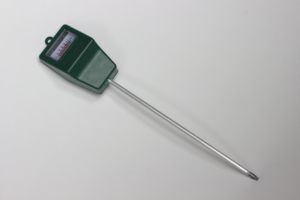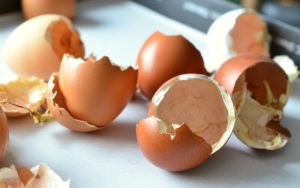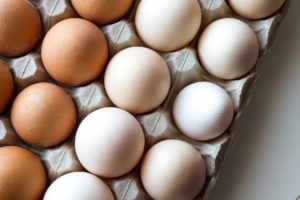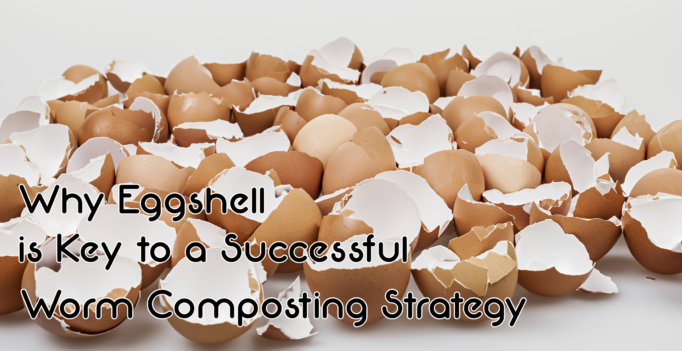I’ll admit, throwing crunchy eggshells in the bin as worm food seems counterintuitive.
Sharp edges, slow to decompose, and full of stuff we would never use in the worm bin, anything egg related sounds like a great big no-no. After all, they have been used as a slug repellent in many a’ garden. But, they’re not! Egg shells in particular, are actually beneficial in the worm bin!
How can that be?
In the next few minutes, you’ll learn just why that hard exterior of an egg works wonders in the worm bin, and how you can use yours to keep a healthy environment for your red wigglers.
The Incredible Edible Egg (Shell)
It’s important to note that the perfectly-portioned protein source we enjoy so well in a scramble is also right near the top of Eisenia fetida’s DO NOT FEED list. That’s right, eggs are an animal product that can attract critters we want kept out of our worm bins.
However, when we get rid of the yolk and albumen, the amazingly delicate yet incredibly strong outer shell of an egg provides a very essential element in the diet of a worm, grit.
Much like birds and other animals that have a gizzard, red wigglers too have this specialized muscular organ in their digestive tract. Inside the gizzard small rocks and other gritty materials, like eggshells, help to break down large food particles for digestion. In essence, toothless worms use eggshell grit in the gizzard to “chew” the food they’ve eaten.
Eggshell Aphrodisiac
For a creature that reproduces at an alarming rate, bearing up to 3 cocoons a week, it hardly seems necessary that I’d consider using a love potion to speed things up! But when I’ve started new bins or needed a population to rebound after harvesting, eggshells have been my go-to for a jump start- and believe me, it’s done the trick!
It’s the calcium within the eggshell that holds the key to unlocking reproductive intentions in the worms. Nowadays, I figure, why slow things down? So, I just sprinkle it in to boost breeding with every feeding!
Keep pH Neutral with Eggshells
Worm composting is generally simple. It hardly takes much effort on the part of the worm farmer at all! But, if there is one thing to get tripped up on with worm composting, it’s the pH. PH refers to the acidity or alkalinity of the contents of your worm bin.
When all things are jivin’, your worm compost should remain at a steady neutral pH, or a 7 on the pH scale. Not sure how yours is doing? It’s definitely worth keeping track of. Using a simple probe pH meter will tell you in seconds how your bedding fares.
 Many of the kitchen scraps our red wigglers love lean toward an acidic pH. Using a pH meter lets us know if we’ve let it go too far, but what then? When conditions become overly acidic the health of your worm herd is at risk.
Many of the kitchen scraps our red wigglers love lean toward an acidic pH. Using a pH meter lets us know if we’ve let it go too far, but what then? When conditions become overly acidic the health of your worm herd is at risk.
So, what’s all this got to do with eggshells? I’m glad you asked.
Eggshells, again, the calcium in them, provides a buffer against acidity. When added to acidic bedding, eggshells reverse the acidity bringing the pH to a neutral level without ever making it alkaline.
Eggshells are a very safe worm composting amendment that safeguards you against the dangers of low pH. Bedding with a high pH (too alkaline) however, requires a worm farmer to take entirely different measures. You can read more about correcting high pH here, in one of our archived articles.
Turn Eggshells into a Worm Food/Aphrodisiac/PH Buffer
One of my favorite things about worm composting is how resourceful it makes me feel. I love using what would have been trash to make something new and useful. And with a family of 5 enjoying 21 meals a week out of my kitchen, there are always eggshells on hand!
There are many ways to do it “right”, but here’s how I like to do it:
- Crack open eggs and use up the inside.
- Throw shells in a bowl.
- Set shells outside to dry.
- Collect dry shells in a lidded tupperware.
- When it’s time to feed, crush eggshells as finely as possible. (mortar and pestle or food processor)
- Sprinkle eggshells evenly over the top and lightly fold into the compost.
 The smaller you can get those eggshells, the more easily they will breakdown in the bin, be digested, and offer up their neutralizing/arousing calcium. Plus, the more finely ground they are, the more quickly they can be processed into worm casts.
The smaller you can get those eggshells, the more easily they will breakdown in the bin, be digested, and offer up their neutralizing/arousing calcium. Plus, the more finely ground they are, the more quickly they can be processed into worm casts.
If you don’t pulverize the shells they are still worth throwing into the mix. Though it takes a while, in time even large pieces break down enough to become part of the bedding. But beware, the rough edges of an eggshell can puncture or cut delicate worm skin as you turn the contents of your worm bin.
One simple way I like to reduce that risk is to throw my shells right into the blender with food scraps if I haven’t gotten around to crushing them ahead of time.
How much is too much?
Sometimes it’s possible to have too much of a good thing. For example, I wouldn’t want to overdo it on giving my worms fresh coffee grounds. Because, that would cause the acidic conditions we’re trying to avoid here. But eggshells aren’t like that. Though they are alkaline, and can raise the pH out of being too acidic, they never push the overall pH beyond neutral.
When I get a pH reading under 7, I know I need to quickly counteract that acidity for the wellbeing of my worms. So, to do that I add the alkaline (high pH) eggshells. I don’t measure, but I just add enough so that I can see it even when I’ve folded it all in.
There is no evidence to show that adding a great deal of pulverized eggshell harms a worm colony. Still, It’s always good to keep a 60/40 balance of greens to browns. With eggshells falling into the browns category, it would take a lot of eggshells to throw off that balance.
How often should I add eggshell?
 Eggshell is a bit of a wonder-substance when it comes to worm composting. For every time your pH meter reads less than 7, every time you are wanting to expand your worm herd, and for each day you want your worms to digest their food properly, eggshells have what it takes to get it done.
Eggshell is a bit of a wonder-substance when it comes to worm composting. For every time your pH meter reads less than 7, every time you are wanting to expand your worm herd, and for each day you want your worms to digest their food properly, eggshells have what it takes to get it done.
One good rule of thumb suggests it’s time to add more when there are no longer remains from your last eggshell application. Others, myself included, add eggshells whenever they have accumulated enough to just want to get them off the counter. And that’s at least a few times a week!
Eggs anyone?
Now that you know how valuable those breakfast scraps are, I hope you’ll find lots of opportunities to have great meals and lavish some exceptional scraps on your worm friends when you’re done.
I don’t eat eggs. What can I do?
Dietary restrictions and personal beliefs keep many worm farmers from enjoying eggs in their diets. If that is the case for you, it’s especially important to keep a close eye on the acidity of your worm bin using a simple probe meter.
If you need to raise the pH of your worm bedding without the use of eggshells, lime and other alkaline amendments are available from your local garden center or online.
What now?
Now that you have one more tool in your arsenal of worm composting skills, go out there and poke around! Use your pH meter to find out how acidic each of your worm bins are. Add some pulverized shell and see what happens.
Don’t have a meter of your own yet? Purchase one of The Squirm Firm’s affordable pH meters today to be sure your compost worm habitat is kept healthy year round. Then, be on the lookout for a boom in egg laying and the next generation of worms who are hungry for your eggshells!
Happy worm composting!


I have a ph meter, in fact I’ve had a number of them and no matter where I use them they all read a 7. I have no faith in these meters. Best to get a good test kit and forget the meters.
Hi, Robert. I agree that a good test kit can also be a reliable way to measure pH, but I love the probe meter for being as simple as sticking that probe in and having an instant-read, as many times as I want, without any strips to play around with.
It’s important to remember, however, that a probe meter will only work in somewhat moist bedding/soil conditions. That is because it’s the electrolytes FROM the soil IN the water that the probe reacts to. Want to be sure you are using them properly? Check out this brief explainer video and blog post, https://thesquirmfirm.com/use-new-ph-meter-squirm-firm/.
Happy worm composting, and may all your worm compost continue to read a perfectly neutral 7!
Thanks for the info! Always lots to learn here. : )
You’re welcome! I appreciate learning from everyone’s feedback as well!
Tanks tips were very helpful
Great ideas! I think a baking of the eggs shells in the oven will kill off any bad germs – I use a coffee grinder to send them back to dust!
Nice call on using the coffee grinder to process your eggshells! And you are correct, baking the eggshells will kill off any nasty bacteria PLUS make them more brittle and easier to process down as fine as possible.
Adding small amounts of volcanic rock dust to your worm bedding also gives your worms the grit they need and through the miracle of worm digestion,makes all of the trace elements available for uptake by your plants. Organic fertilizers which contain these trace elements are quite expensive. So make your own!
Can anyone recommend a good, inexpensive coffee grinder? I’ve had a problem with a couple of them. The egg shell powder gets inside somewhere. Thanks!
•Any information on using the worm liquid that comes out of the bottom of the bin?
•Is this considered a worm tea?
•How do you use the worm tea?
Hi Tim! You’ve come to the right place! That liquid is called leachate. Worm tea is a different and wonderfully magical product! You can learn all about them here, https://thesquirmfirm.com/leachate-vs-worm-compost-tea-whats-the-difference/#:~:text=A%20worm%20compost%20tea%20is,the%20ecosystem%20of%20our%20soils.&text=On%20the%20other%20hand%2C%20leachate,leaching%20through%20a%20worm%20bin.
love to learn
the things for the worms to eat i have 9 at school and need to bring things home so tell me more
Do you need to peel the soft lining on the inside of the egg off or can it go into the worm bin?
Hi Jennie!
There is no need to peel the lining. But it is important to bake your eggshells in the oven to remove any pathogens that may be present on the shells. We recommend baking the eggshells at 400 degrees for about 20 minutes. It also makes the eggshells easier to pulverize into bits that are small enough for your worms to ingest.